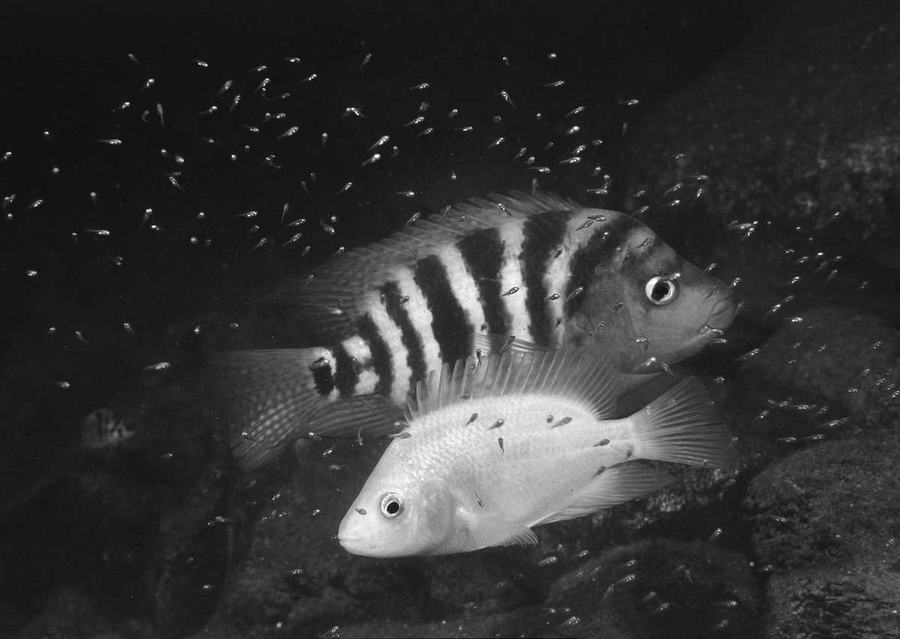
Amphilophus-xiloaensis, cichlid fish from Central America ©Ad Konings
How do new species arise, and how quickly does this happen? Evolutionary biologist Axel Meyer from the University of Konstanz and Gene Myers from the MPI-CBG and the Center for Systems Biology Dresden have come one decisive step closer to answering these fundamental questions. In a large-scale multidisciplinary study, recently published in Nature, the researchers provide answers to questions concerning the genomic basis of adaptations, the differences between species, and the mechanisms of speciation.
To do so, the scientists evaluated an extensive genome data set collected from an extremely young species of cichlid fishes (Amphilophus spp.) in crater lakes in Nicaragua. They re-sequenced 453 fish genomes and analysed the genomic divergence among populations and species. Gene Myers, research group leader and director at the CSBD and the MPI-CBG, together with his postdoc Martin Pippel, generated new high-quality reference genomes, which were sequenced in the DRESDEN-concept Genomer Center. By mapping these new assemblies to the re-sequenced fish genomes the researchers uncovered the genetic architecture of traits that have been suggested to be important for divergence.
The results of the study suggests that the evolutionary divergence of a population in the same geographical area into a new species is more likely to occur when many genes across the genome are involved in producing species-distinguishing characteristics. More surprising, the scientists found that new species can emerge within only a few hundred years. This contradicts the established theory that speciation is a slow process and that inter-species differences with a simple, genetically limited architecture are more likely to result in the formation of a new species than those on a so-called polygenic basis.
Bioinformatician Myers says, "This work is another prime example of the fruitful collaboration between biologists and computer scientists. I'm very happy that together we made one more step towards the question that Darwin already asked: What is a species, and how and why do new species arise?"
Congratulations to the Meyers and Myers lab!
Press release University of Konstanz
Andreas F. Kautt, Claudius F. Kratochwil, Alexander Nater, Gonzalo Machado-Schiaffino, Melisa Olave, Frederico Henning, Julian Torres-Dowdall, Andreas Härer, C. Darrin Hulsey, Paolo Franchini, Martin Pippel, Eugene W. Myers & Axel Meyer: "Contrasting signatures of genomic divergence in rapidly speciating crater lake cichlid fishes", Nature, 28 October 2020, DOI: https://doi.org/10.1038/s41586-020-2845-0